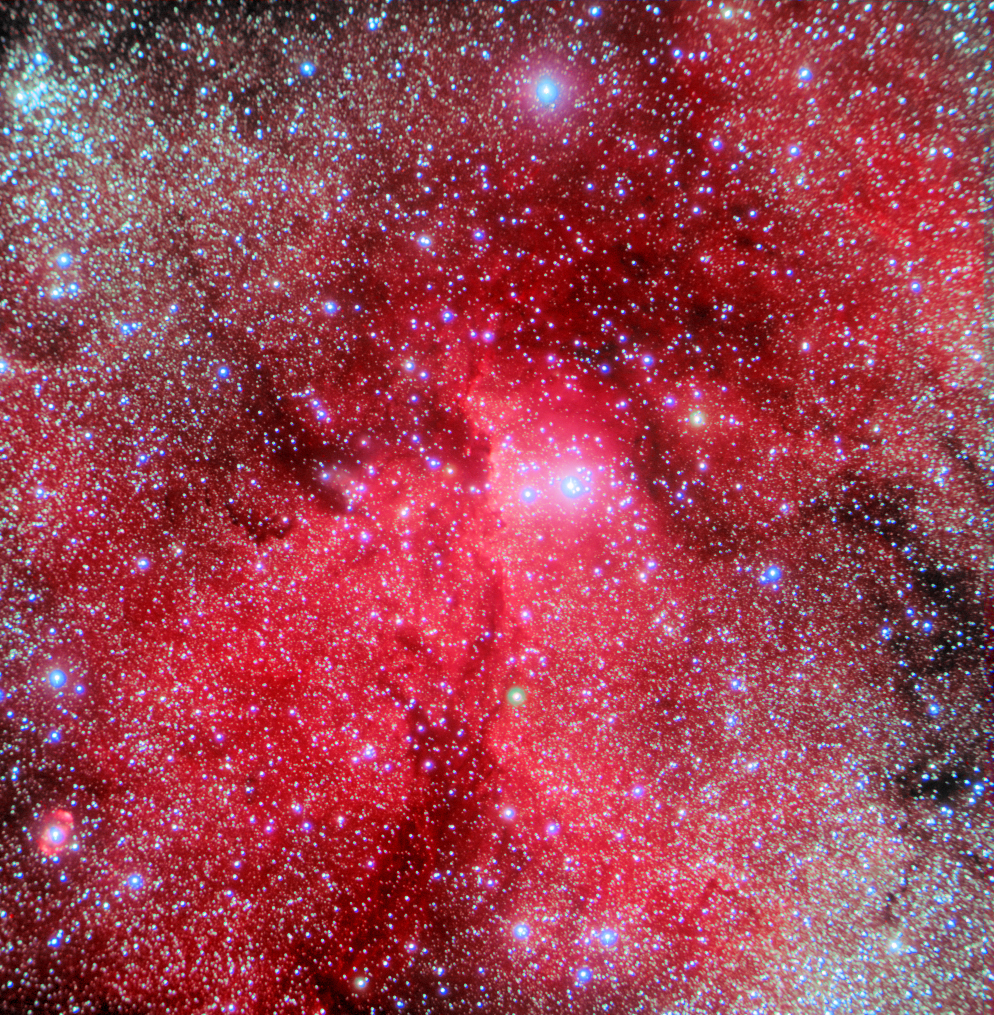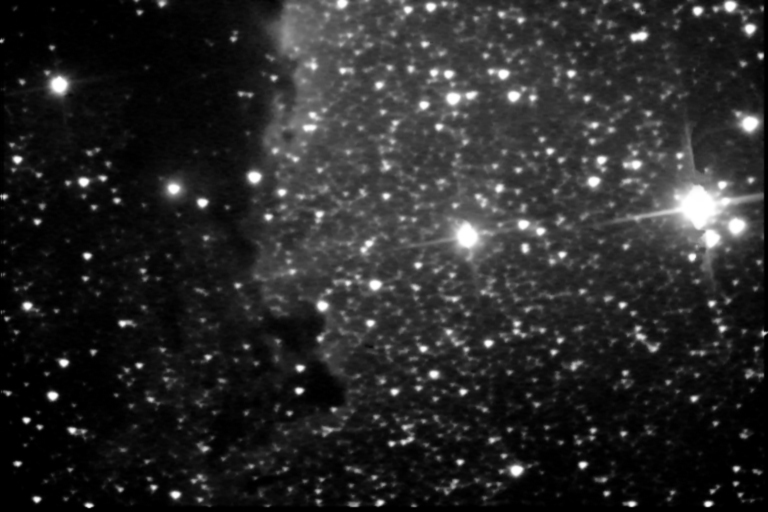
Combination of 2, 3 minute images, Meade 416XTE CCD.
8" f/6 newtonian at prime focus.

Situated in the southern reaches of the Milky Way in Ara, is an interesting patch of bright and dark nebulosity surrounding a small open cluster. The nebulosity is NGC 6188 and the cluster is NGC 6193. The cluster is fairly weak, containing only a few scattered stars, however the brightest are all blue giants which contrast well with the rich surrounds of the Milky way. The nebula is difficult to observe visually, but can be detected with an 8" telescope if the skies are dark. The region deserves to be better known, as it probably would be if it were more accessible to northern hemisphere observers.
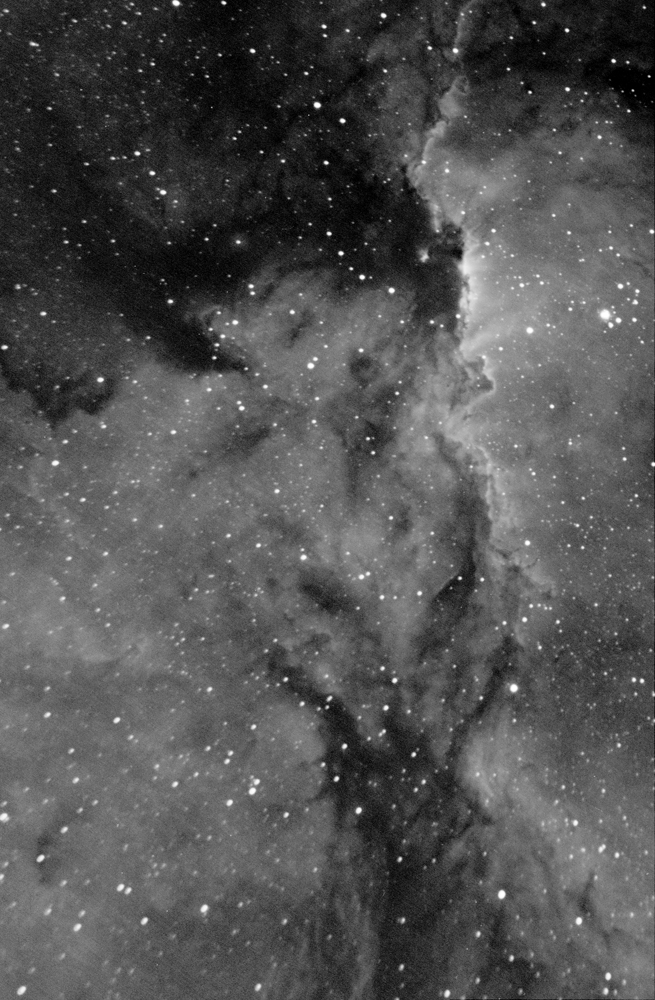
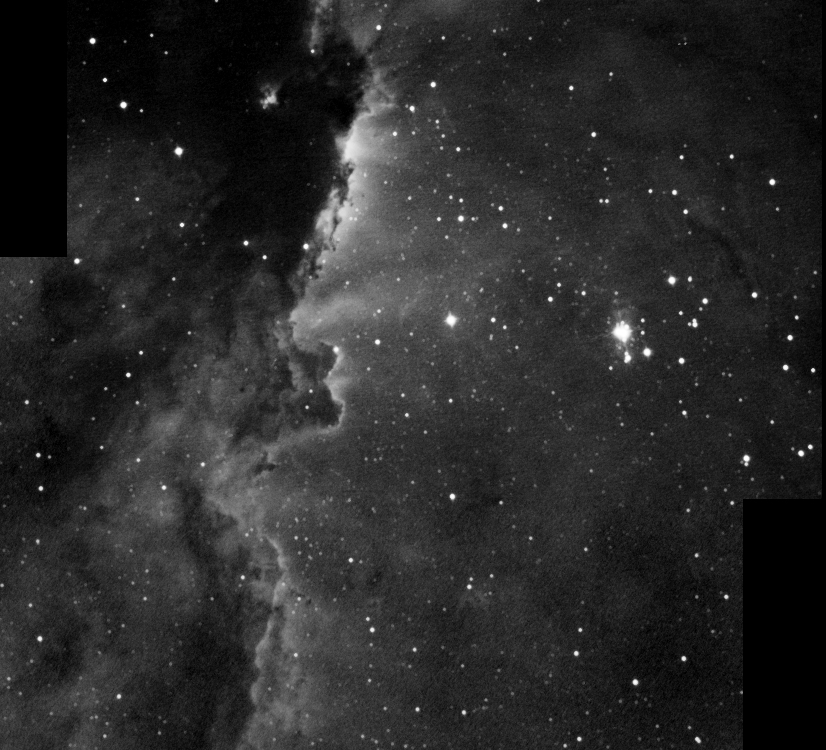
The small grouping of stars to the right is NGC 6193.
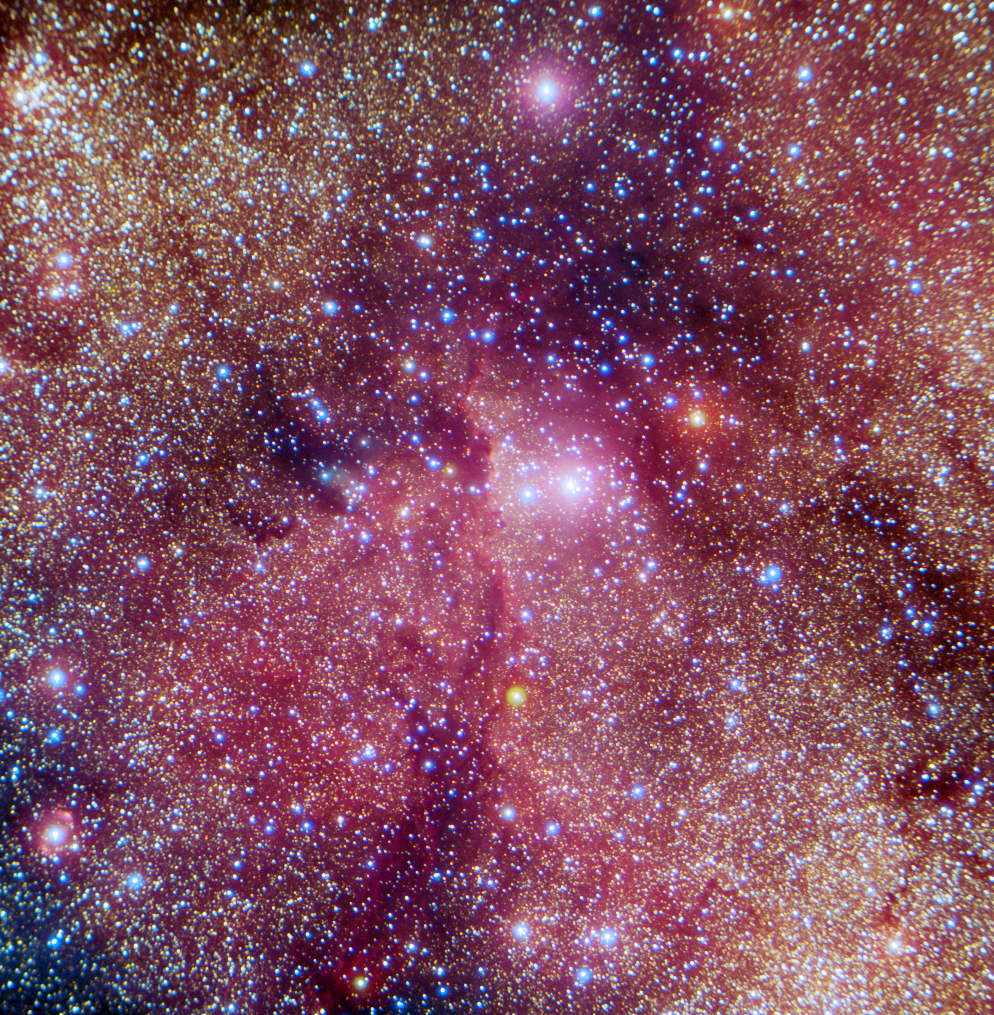
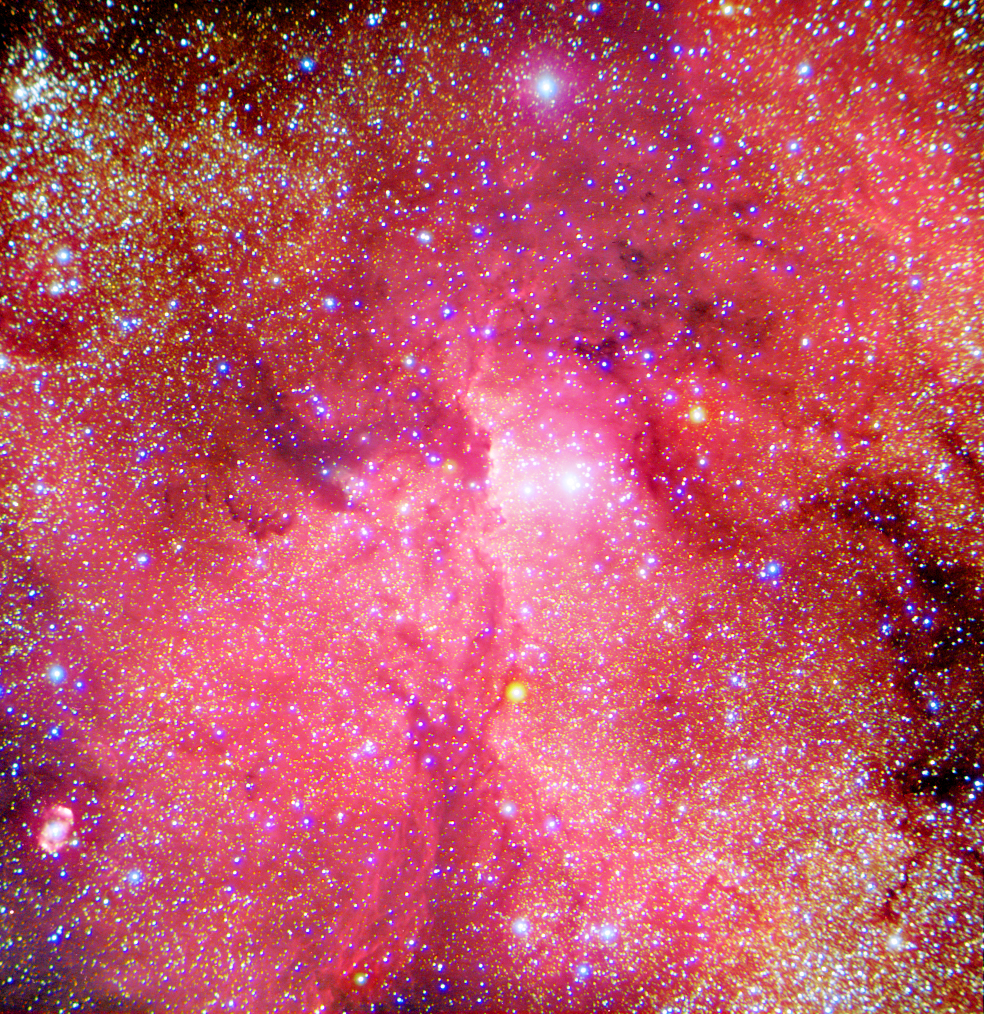
The small grouping of stars in the heart of the nebula is NGC 6193, while near the lower left is the nebula NGC 6164/6165.
In an effort to show more on the nebulosity, I tried different combinations of the H-alpha data with the RGB data. In the first image below, the H-alpha data has been used for the red channel.
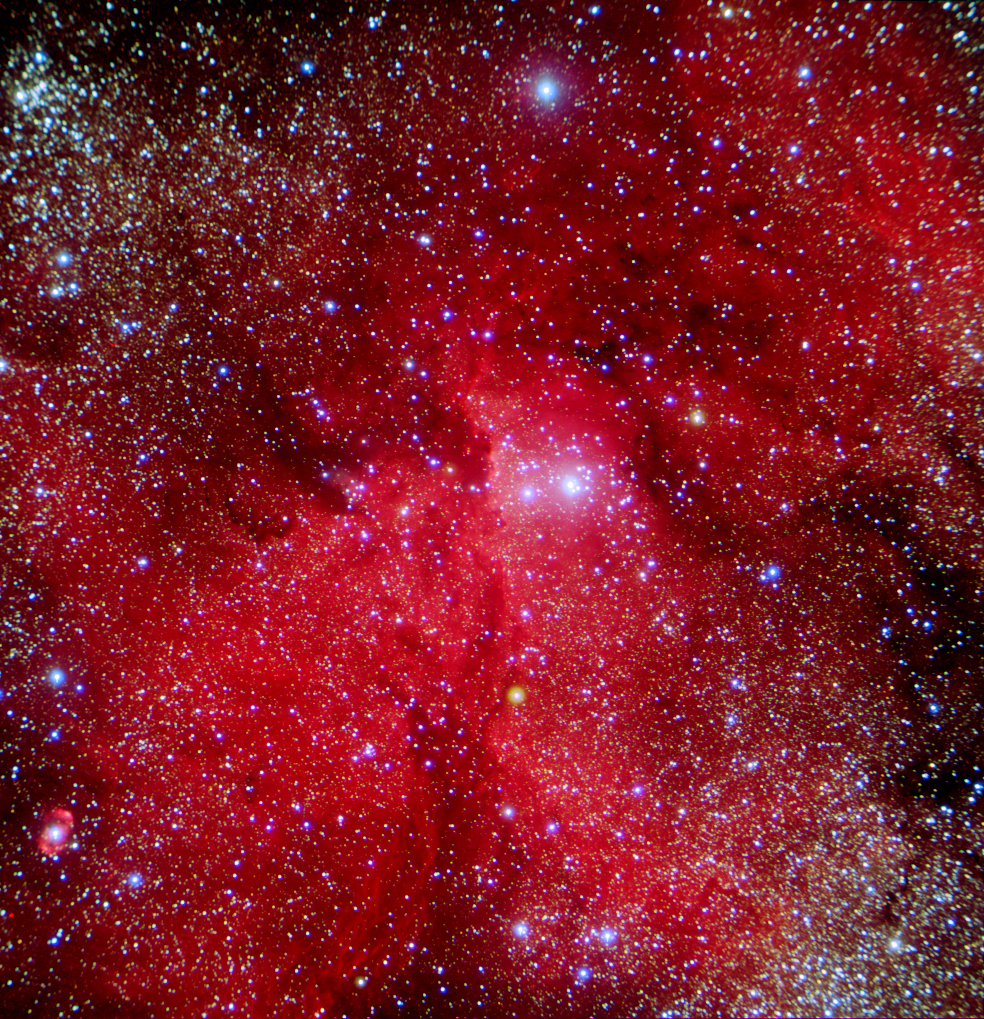
The next image shows the effect of using the H-alpha data as both the red channel and the luminance channel.
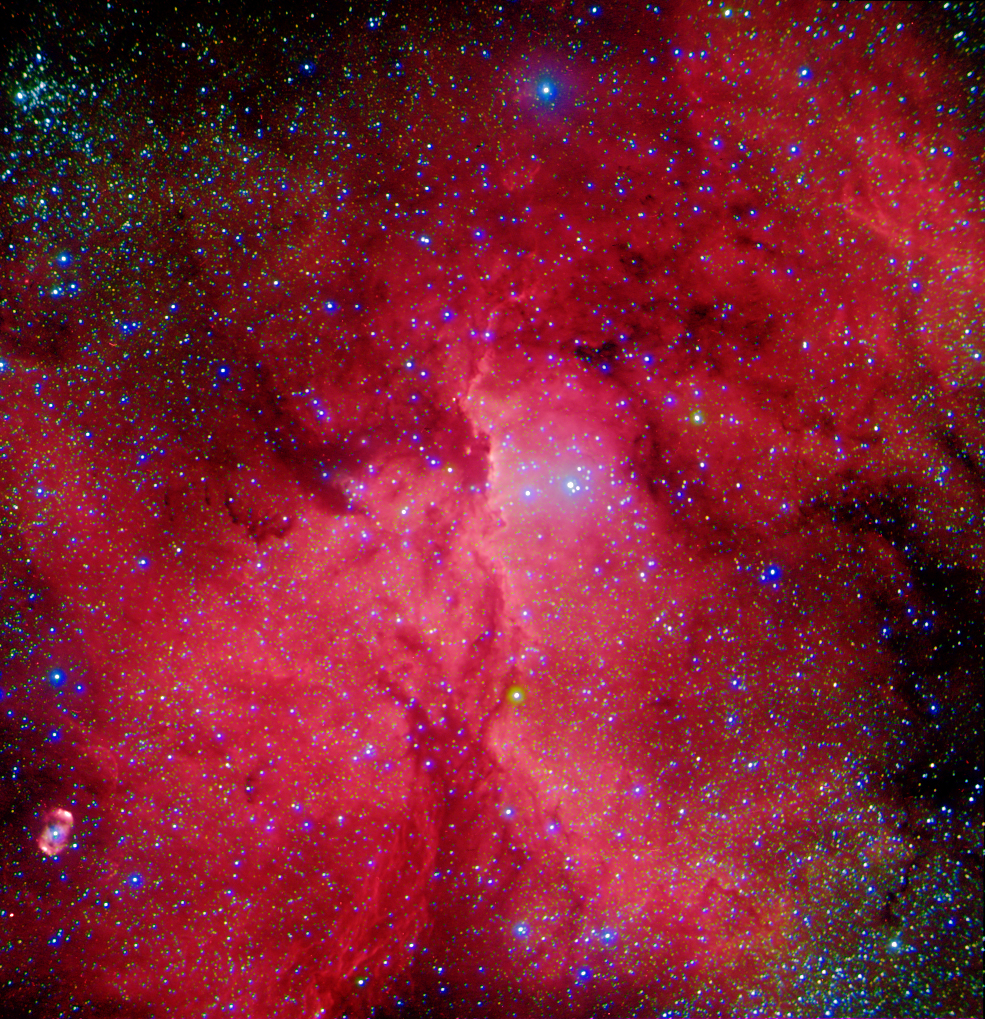
One very interesting thing in these images is the arc in the nebula just to the upper right of NGC 6164/6165. It looks very similar to some form of shock front. From the alignment with the central star of NGC 6164/6165, it looks like this is the source of this feature. I have not seen any discussion of this feature in the literature.
The last image is a combination of the RGB image and the HaHaGB image.
